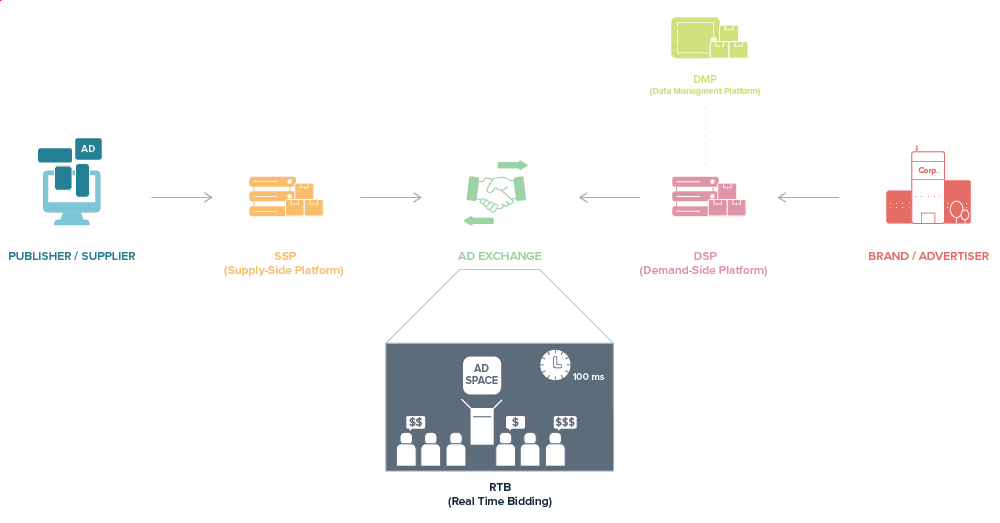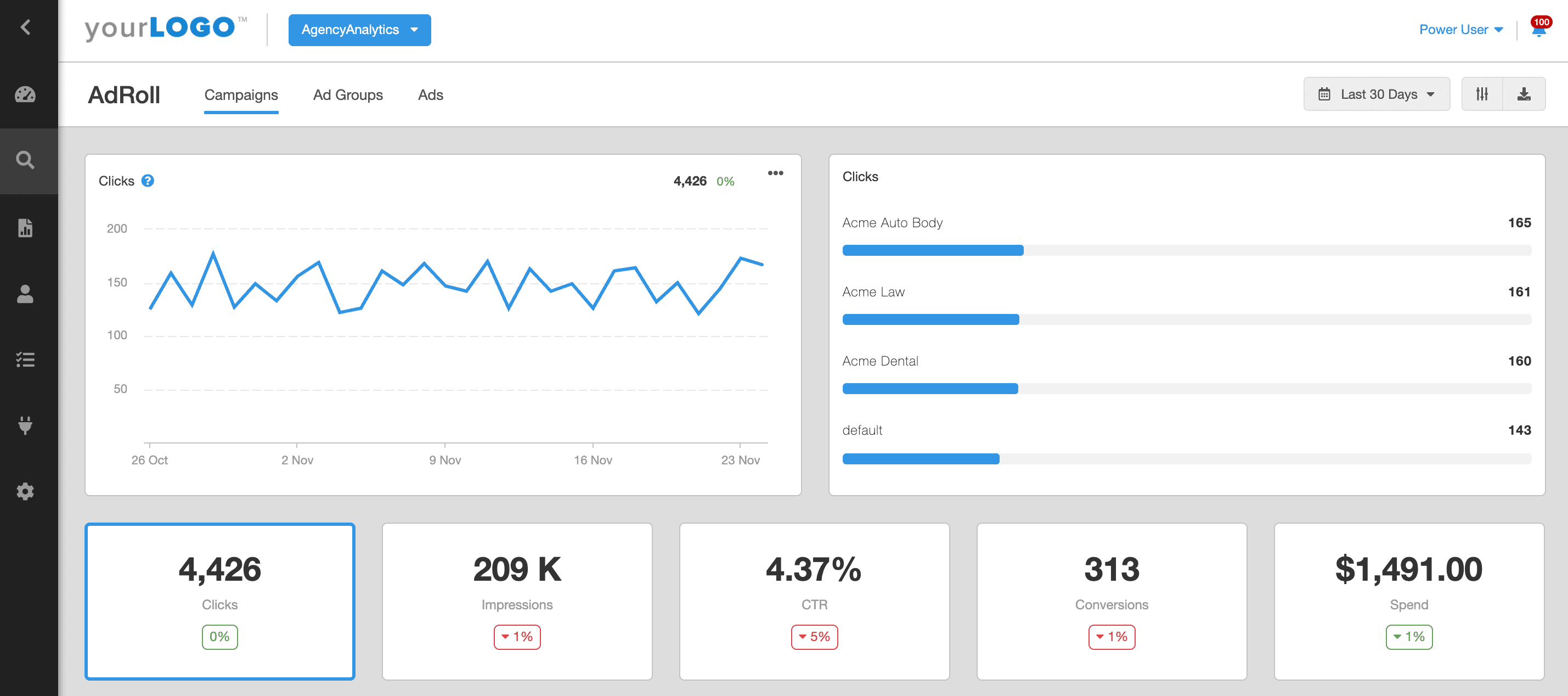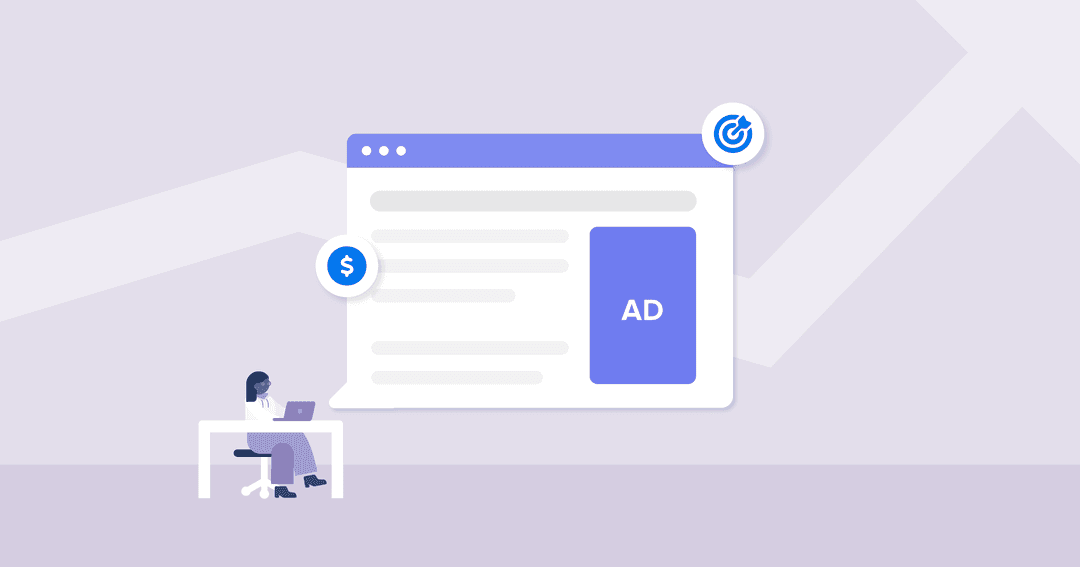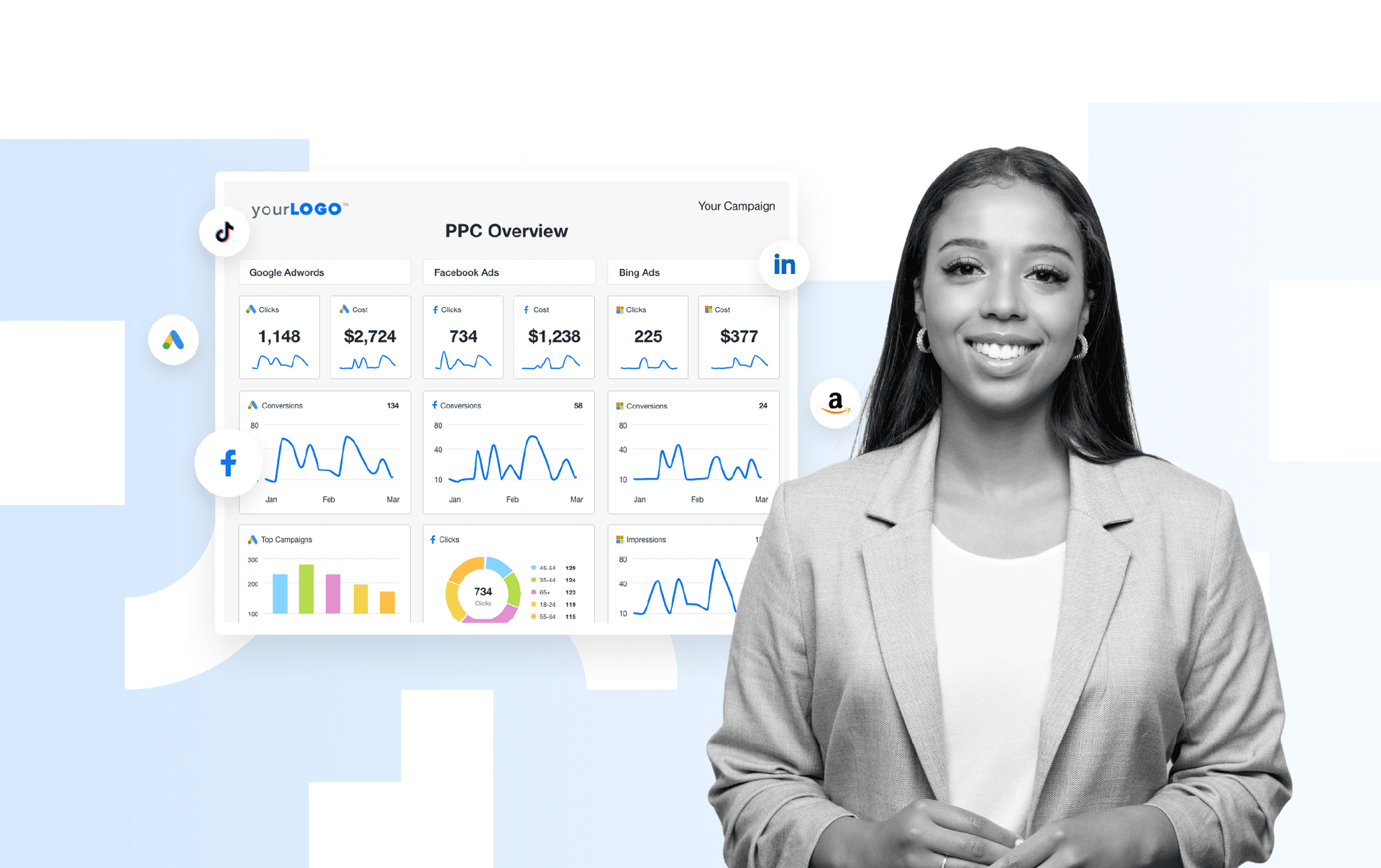Table of Contents
Table of Contents
- What is Programmatic Advertising?
- What is an Ad Exchange?
- How Much Does Programmatic Advertising Cost
- What is Real-Time Bidding?
- Demand-Side (DSPs) vs. Sell-Side Platforms (SSPs)
- Targeting Strategies for Programmatic Advertising
- Metrics To Measure Your Programmatic Results
- Summary: Programmatic Advertising for Agencies
7,000+ agencies have ditched manual reports. You can too.
Free 14-Day TrialQUICK SUMMARY:
Programmatic advertising automates the buying and selling of online ad space using technology and data. This method enhances the efficiency of ad placement in real-time across diverse media platforms. Including formats like display, video, and mobile, programmatic advertising leverages demand-side platforms (DSPs) for efficient ad inventory purchase. This guide covers all aspects of programmatic advertising for agencies, from targeting strategies to result tracking.
If you've ever managed an online advertising campaign for your own business or for clients, you've likely heard of programmatic advertising.
Despite being around since the late '90s, there's still a lot of confusion about what programmatic advertising is and exactly how it works. With spending on programmatic ads expected to surpass $200 billion in 2023, it's an important concept for marketers and agencies to understand. In this guide, we'll discuss everything that agencies need to know to know about programmatic advertising, including:
Let's get started.
What is Programmatic Advertising?
Programmatic advertising is the automated process of buying, selling, and optimization of digital advertising.
Instead of the traditional process of advertisers negotiating and purchasing directly ad space directly from publishers, programmatic advertising is designed to automatically connect these two parties in a real-time auction. As we'll discuss below, this real-time auction means that ads are bought and sold at the exact same time that a visitor lands on a website or app.
In order to facilitate this real-time auction, behind every programmatic advertising is a machine learning algorithm that analyzes the advertiser's campaign and targeting inputs, the publisher's ad space, and user behavior in real-time. The goal of these algorithms is ultimately to match the advertiser's campaigns with the user's interests, demographics, and a number of other data points in order to increase the probability of the campaign's success.
To truly understand programmatic advertising, let's review the key participants and mechanisms that facilitate transactions between advertisers and publishers as highlighted in the image below from Match2One, which includes an ad exchange, real-time bidding, and demand-side vs. sell-side platforms.

What is an Ad Exchange?
Ad exchanges sit in the middle of the programmatic advertising ecosystem and connect advertisers with publishers.
An ad exchange operates similar to a stock exchange, although the inventory being sold is display advertising. As mentioned, the majority of ad exchanges operate through real-time bidding (RTB) auctions in which ad inventory is bought and sold at the same moment a visitor loads a web page.
On either side of the ad exchange is a Demand-Side Platform (DSP) where advertisers buy ad placements and a Supply-Side Platform (SSP) where publishers sell their ads space.
Keep in mind that an ad exchange is different from an ad network, which are platforms that connect to various websites and offer their ad inventory for sale. An ad exchange is where the actual transaction occurs and allows advertisers to purchase ad space from multiple ad networks.
How Much Does Programmatic Advertising Cost
Understanding the cost of programmatic advertising is crucial for agencies planning to leverage this strategy for digital advertising campaigns. The complexity of programmatic ad buying, which includes a range of ad formats like video ads, banner ads, and native ads, affects the overall cost. This section outlines the average costs and strategies for setting targets for successful campaigns.
Overview of Programmatic Advertising Cost
The cost of programmatic advertising varies widely, influenced by factors such as the type of digital ads, the advertising space, and advanced targeting capabilities. Programmatic advertising process involves the use of programmatic advertising platforms to purchase digital ad inventory, which can fluctuate in price due to market demand.
Ad Impression Costs: The price of programmatic media buying is often based on ad impressions. The cost per thousand impressions (CPM) can range significantly, depending on the quality and specificity of the audience targeted. Video ads typically command higher CPMs compared to banner ads due to their higher engagement rates.
Media Buying Comparisons: Traditional media buying usually involves set prices for advertising space, while programmatic advertising allows for more dynamic pricing. Programmatic ad buying process can result in cost efficiencies as it enables agencies to buy ad space in real-time and optimize ad spend based on performance data.
Programmatic Advertising Campaign Budgets: Agencies need to consider the overall budget for their digital advertising campaigns. The programmatic advertising cost includes not just the price for ad impressions but also additional costs for technology, data management, and creative development.
Industry Benchmarks and Historical Data in Setting Campaign Targets
For agencies, leveraging industry benchmarks and historical data is vital for setting realistic and successful targets for programmatic advertising campaigns.
Utilizing Benchmarks: Industry benchmarks provide valuable insights into average costs and performance metrics for different types of ads. For example, the average CPM for programmatic video ads can serve as a guide to what agencies might expect to pay.
Historical Data Analysis: Analyzing past campaign data helps agencies understand how different strategies impact programmatic advertising cost and campaign performance. This data can guide future media buying decisions, helping to optimize ad spend and achieve better ROI.
Cost Versus Performance: Balancing cost with performance is key in programmatic advertising. Agencies should not only focus on the lowest cost but also consider the value brought by advanced targeting capabilities and high-quality ad inventory.
Programmatic Advertising Strategies: Agencies should develop programmatic advertising strategies that align with their overall marketing goals. This includes choosing the right mix of ad formats, targeting options, and budget allocation to maximize the impact of the ad spend.
Comparing with Traditional Media Buying: When transitioning from traditional to programmatic marketing, agencies should compare the costs and benefits of both methods. Programmatic advertising offers more flexibility and precision, which can lead to more efficient use of advertising budgets.
The cost of programmatic advertising is not a one-size-fits-all figure. Agencies must consider various factors, including the type of ads, targeting capabilities, and market dynamics. By using industry benchmarks and historical performance data, agencies can set realistic targets for their programmatic advertising campaigns, ensuring a strategic and cost-effective approach to buying ad space and managing digital advertising efforts.
Average Cost for Programmatic Ads in 2023
The following table outlines some of the average costs for programmatic ads in 2023, based on the different types of ads available on a programmatic platform.
Type of Ad | Average Cost Range (CPM in USD) |
|---|---|
Video Ads | $10 - $30 |
Display Ads | $2 - $5 |
Banner Ads | $1 - $4 |
Native Ads | $5 - $10 |
Rich Media Ads | $10 - $20 |
Mobile Ads | $3 - $8 |
Social Media Ads | $6 - $12 |
Interstitial Ads | $4 - $9 |
Retargeting Ads | $3 - $10 |
Audio Ads | $8 - $15 |
This table provides a general overview of the average cost range for various types of programmatic ads. These numbers serve as a guideline; actual costs can differ based on specific campaign requirements, audience targeting, ad quality, and the programmatic platform used. It is essential for marketing agencies to keep these ranges in mind when planning and budgeting for their digital advertising campaigns.
What is Real-Time Bidding?
One of the ways that programmatic advertising facilitates a transaction between advertisers and publishers is through real-time bidding (RTB). Transactions made through real-time bidding occurs within the time it takes to load a page; or roughly 100 milliseconds.
Here's how the process of real-time bidding works at a high-level:
As soon as a visitor lands on a website or app a request is sent to an ad exchange that includes information about the visitor and the property they're visiting
The ad exchange then matches the user and property data with relevant advertisers
Bids are sent from these advertisers through a demand-side platform and a real-time auction takes place
The winner of the auction gets to display their ad to the visitor
Since advertisers traditionally used to buy display ads in bulk, this meant they would be seen by every visitor of the site or publication. With programmatic and real-time bidding, however, advertisers can choose to bid only on visitors that are within their target audience.
As the programmatic advertising platform Match2One puts it:
Real-Time Bidding allows for better and quicker targeting, enabling ads to be bought and sold on a per-case basis, meaning only visitors who are in your target audiences will be subjected to the ad.
Keep in mind that the vast majority (90%+) of programmatic advertising uses this real-time bidding process, although there are several other ways types of programmatic buying. The two other main types of programmatic advertising include
Programmatic Direct: This is a direct deal between advertisers and publishers, which eliminates the need for an ad exchange intermediary.
Private Marketplace (PMP): These are invite-only programmatic marketplaces where both buyers and sellers are qualified before facilitating advertising auctions.
Demand-Side (DSPs) vs. Sell-Side Platforms (SSPs)
Ad exchanges sit in between Demand-Side Platforms (DSPs) and Sell-Side Platforms (SSPs), so let's define each in a bit more detail.
Demand-Side Platforms
DSPs allow advertisers to manage and optimize their programmatic ad campaigns. When a visitor lands on a site and the ad exchange sends a request, it's the DSP that tells the exchange whether there is a match between the advertiser and visitor. If there is a match, the DSP then responds with a real-time bid for the auction.
Sell-Side Platforms
SSPs enable publishers to sell their display space to programmatic advertisers. SSPs connect directly to ad exchanges and provide details about the type of ad inventory available and the audience demographics.
Data Management Platforms (DMP)
The final piece of the programmatic ecosystem is a data management platform, which is used to collect and store information. Since ad exchanges make a request the instant someone starts loading a page and completes the transaction by the time it's loaded, a DMP is used to sort information about the incoming visitor from their cookie data.
DMPs are typically used by demand-side platforms since they are the ones who need to decide whether to bid on a visitor and ad placement. For this reason, often a DSP and DMP will be combined into a single platform.
Now that we've reviewed the key participants in programmatic advertising, let's look at a few targeting strategies for advertisers.
Targeting Strategies for Programmatic Advertising
As with other types of digital advertising, there are a number of targeting strategies you can use in order to display your ads to the most relevant visitors possible. As Centro highlights in their article on programmatic campaign tactics, a few of the most popular targeting options include:
Audience Targeting: This allows you to place ads based on specific user demographics, behaviors, or interests. Audience targeting is useful if you know exactly what your ideal customer looks like, but you're not sure where to find them.
Contextual Targeting: This is similar to audience targeting, although the difference is that you're targeting based on the type of content that users are browsing.
Website or App Targeting: This is a useful option if you already know which websites or apps you're target audience is visiting. You can also often combine website or app targeting with a specific audience group.
Geo-Fencing: This type of targeting focuses on individuals within a specific geographic location. Geo-fencing is quite effective for mobile campaigns as they make use of GPS data.
Retargeting: Retargeting allows you to build audience lists based on users who have visited or taken a specific action on your site. The goal here is to remind and re-engage users to complete a conversion.
Now that we've reviewed the programmatic advertising ecosystem and several targeting options, let's review how you can actually measure the success of a campaign.
Metrics To Measure Your Programmatic Results
This list is certainly not exhaustive as the metrics that matter most will change for each advertiser, although a few of the most common are highlighted from our Adroll integration below.
Conversions
Spend

Below that each of these metrics is broken down for at the campaign, ad group, and ad level:

Summary: Programmatic Advertising for Agencies
Programmatic advertising accounts for a large portion of online advertising spend and involves the automated buying and selling of ad space. This automation is accomplished through several key participants and mechanisms that facilitate a transaction in the time it takes to load a web page, particularly ad exchanges, demand and sell-side platforms, and real-time bidding.
Similar to other types of digital advertising, the available targeting options include specifying audience demographics, interests, locations, types of content, websites or apps, and retargeting lists. Once you've specified your campaign and targeting inputs, a key part of any programmatic campaign is tracking, measuring, and optimizing your results over time.

Written by
Peter Foy is a content marketer with a focus on SaaS companies. Based in Toronto, when he’s not writing he’s usually studying data science and machine learning.
Read more posts by Peter FoySee how 7,000+ marketing agencies help clients win
Free 14-day trial. No credit card required.





